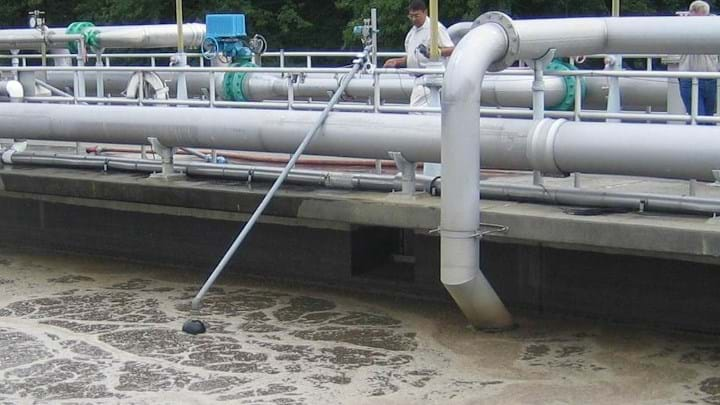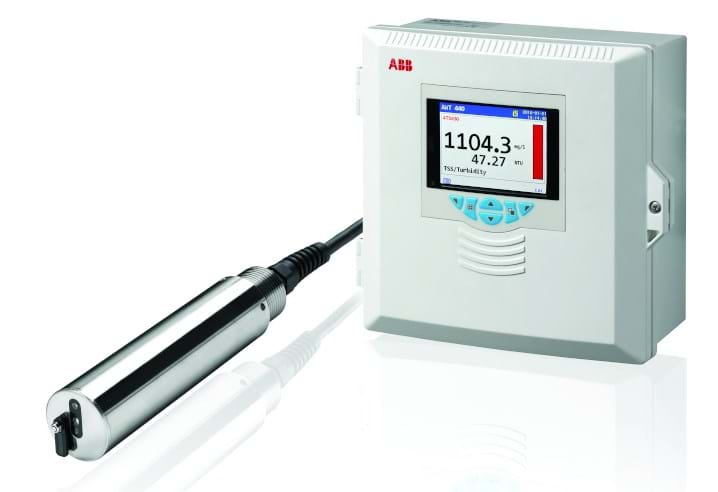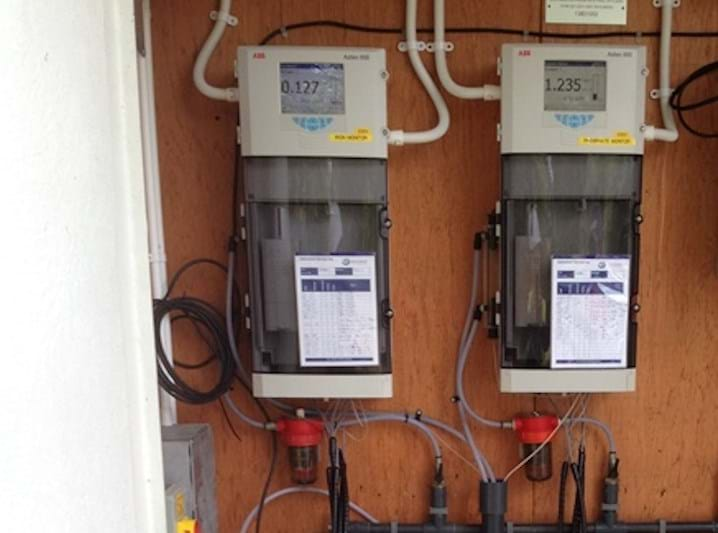
.................................................................................................................................................
Article
by Julian Edwards
Developments in measurement technology
are opening new opportunities for operating and managing both potable and
wastewater treatment processes.
This article will look at some examples
of the new digital sensing technologies on offer and explain how they are
already delivering real benefits for water utilities.
Conventional wisdom dictates that it’s
always better to prevent a problem rather than trying to deal with it once it
has happened.
This is especially the case in the
water industry, where failure of an instrument, pipeline or item of plant such
as a pump or motor can have a potentially significant impact on everything from
supply through to regulatory compliance.
The need to meet stringent
environmental legislation and maximise profitability through reduced operating
costs is incentivising many operators to find ways to better understand what’s
happening in their processes.
Developments in digital water sensing
technology are offering unprecedented access to a raft of real-time, high
accuracy data without the drawbacks associated with many conventional sensor
types.
By utilising these devices, operators
can count on greatly improved measurement of many of the key parameters entailed
in potable and wastewater treatment processes.
For operators, a key advantage has been
the ability to make informed decisions based on data that reflects actual
operating conditions, either in real or near-real time.
This is becoming increasingly desirable
as the management of water supplies comes under pressure from the combined
forces of population growth, rising urbanisation and growing industrialisation.
Each consumes large amounts of water
and generates effluent waste that needs to be treated to the highest quality
before being returned to the environment.
Online
analyser systems enable samples to be automatically measured and analysed at
the point of sampling, giving real-time indication of current process
conditions
Making the switch to
digital
Successful adoption of digitalisation
starts with identifying the right balance of both tools, in terms of the front
line instruments, and the systems that will be used to collect, analyse and
distribute the collected data.
At the most basic level, digitalisation
enables plant operators to improve their snapshot view and understanding of
what’s happening in their current operations.
At the highest levels, it can also be
leveraged strategically for improving customer satisfaction, balancing
allocation of capital, and supporting better decision-making in day-to-day business,
financial, and water-treatment activities.
The immediacy of digital technology
makes it an ideal platform for continuous water quality measurement.
Compared to traditional manual sampling
methods, continuous online analyser systems enable samples to be automatically
measured and analysed at the point of sampling, giving real-time indication of
current process conditions and eliminating many of the uncertainties that can
arise when a sample is transported for laboratory analysis.
When combined with the inherent
benefits of digital technology, continuous water quality analysers are offering
new possibilities for a more detailed picture of water quality as well as
greatly improved accuracy and performance.
These same benefits also extend to
maintenance.
Traditionally, devising an instrument
maintenance regime has relied on a combination of manufacturer guidelines,
established practice and, to some extent, guesswork.
Operators could put together a
maintenance schedule based on the likely operational lifespan of a device,
coupled with the anticipated effects of exposure to the medium being measured.
What they often couldn’t predict,
however, was the impact of any unforeseen variations, either in the performance
of the device or the substance it was in contact with.
The effectiveness of the maintenance
and inspection routines also relied on having the staff available to carry them
out.
With a growing number of companies
increasingly faced with shrinking engineering teams stretched across multiple
sites, there has been a risk that these routines are not always carried out to
plan or operated as thoroughly as they should be.
In both cases, there is a risk of
measurement performance being affected by deteriorating accuracy or complete
instrument failure, increasing the potential for a breach of consent levels and
the likelihood of stiff financial penalties being imposed.
With the advent of digital continuous
water quality sensors, these challenges are being overcome.
When coupled with the arrival of next
generation digital transmitters, digital sensors are helping to transform water
quality analysis, not least by enabling operators to use the data they generate
to create smart maintenance routines.
This data can include not just the
water quality parameter being measured, but also device-level diagnostics,
opening new possibilities for assessing performance and pinpointing problems
before they can develop.
By using this data on the known
performance of the sensors to create tailored maintenance routines, operators
can start to manage their maintenance resources more intelligently and
effectively.
 |
| Device-level diagnostics in next-generation digital transmitters and sensors are helping to transform water quality analysis through smarter operation and maintenance |
As well as greatly enhancing the
reliability of the installation, the availability of this ‘deeper data’ also
helps to reduce the cost of operation and maintenance, enabling digital sensors
to offer a much lower total cost of ownership than their analogue counterparts.
Continuous
measurement helps compliance
With the introduction of increasingly
stringent regulations governing the discharge of water to the environment, it
pays to use the best available technology to minimise the risk of any
infringements.
The need to measure phosphate levels
was behind UK water company Severn Trent’s decision to install phosphate
analysers in wastewater treatment plants throughout its operating area.
With the ability to accurately measure
phosphate levels down to 0.0016 ppm, the analysers are helping to ensure that
the company keeps within the increasingly stringent consent limits set by the
UK Environment Agency.
Operating as part of a dosing control
system alongside ammonia analysers, iron analyzers and turbidity monitors, the
phosphate analysers have reduced the company’s reliance on manual sampling.
Connected to Severn Trent Water’s
eSCADA system, the analysers provide continuous real-time data, including any
alarms generated by issues such as high phosphate levels.
 |
| Severn Trent installed 120 Aztec 600 phosphate analysers to help it measure its phosphate levels in line with Environment Agency requirements |
Obtaining real-time data on phosphate
levels helps ensure the company never strays outside its consented limits.
The data is also a boon when it comes
to planning future investments designed to further improve effluent quality.
Taking the wider view
The drive to greater efficiency and
accountability in the water sector makes it desirable for measurement data to
be able to be shared as widely and as easily as possible.
For this to happen requires a shift in
both mindsets and infrastructures that have until now allowed data to
effectively be locked into location or application-specific silos with limited
opportunities for wider dissemination.
Whilst digital instrumentation brings
great benefits to the management and monitoring of individual processes,
it offers even greater advantages if seen as part of a more strategic,
company-wide process of digitalisation.
The rise of web-connected devices
allows companies to benchmark their various facilities against each other to
tease out best practice.
In this way, data can be used not only
to maximise process performance but also to address other key areas, including
improving customer satisfaction, determining the most effective allocation of
capital and enabling better decision-making to improve day-to-day business,
financial, and operational activities.
Sharing this data is being assisted by
the growing capabilities of artificial intelligence and machine learning.
With these technologies, the
traditional challenge of data – how it is analysed, processed and shared – is
increasingly being addressed.
The wealth of data produced by digital
and connected instruments across a company can be collected and analysed by
software solutions that share inputs from sensors, analysers, and control
systems.
The result is a better, overall view of
what is happening, helping operations achieve tighter integration across functions.
This is particularly beneficial for
meeting the water industry’s total expenditure (TOTEX) approach, with its
emphasis on holistic network management.
Here, the ability to share data between
instruments in a network more efficiently makes it easier to obtain a clearer
picture of what is happening throughout a network rather than being focused on
a few specific parts of it.
Connected with this is the ability to
to use maintenance resources more effectively.
Data from instruments can be used to
create predictive maintenance routines based on actual performance, enabling
employees to be deployed more effectively, with the knowledge and tools needed
to address any potential issues.
Summary
More information, better control, less
cost, more focussed maintenance, fewer breakdowns and a substantially reduced
chance of water quality incidents – when it comes to wastewater treatment, the
all-round benefits offered by the latest generation of online digital sensors
and analyser systems make them the ideal solution for water companies needing
to find ways to keep a continuous eye on process performance and regulatory
compliance.
Article
by Julian
Edwards
Analytical
Sales Specialist at ABB Measurement and Analytics


No comments:
Post a Comment